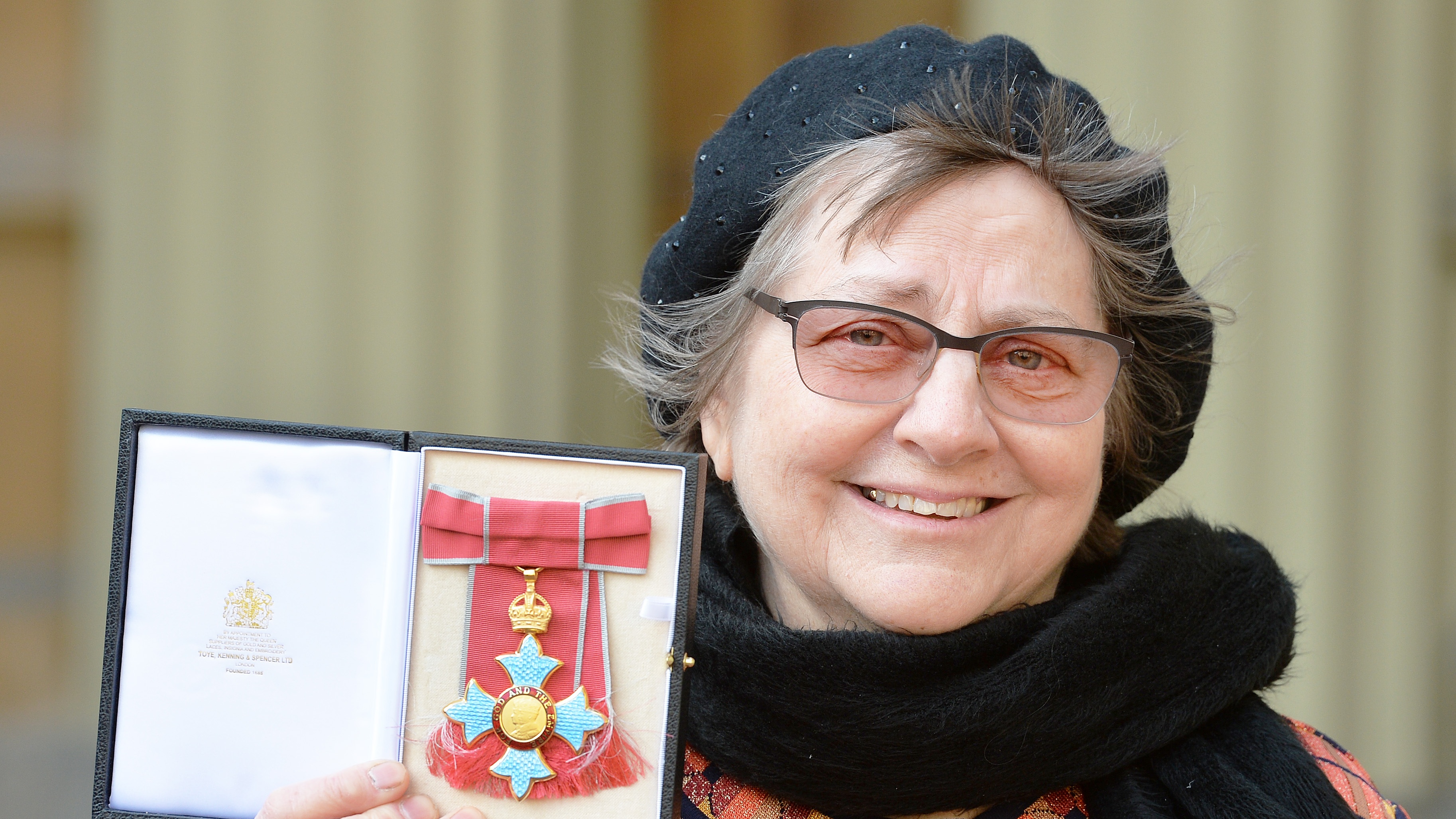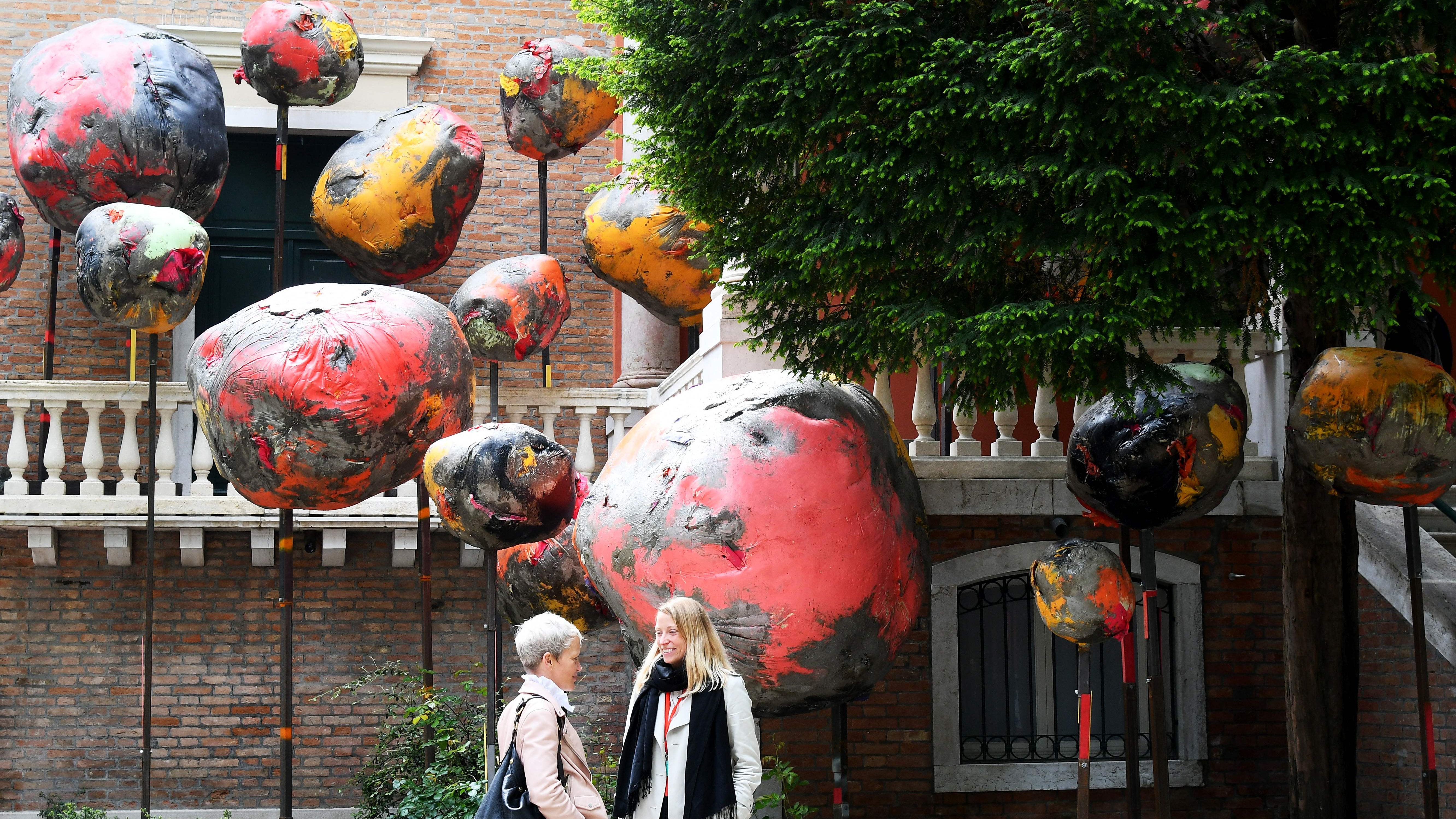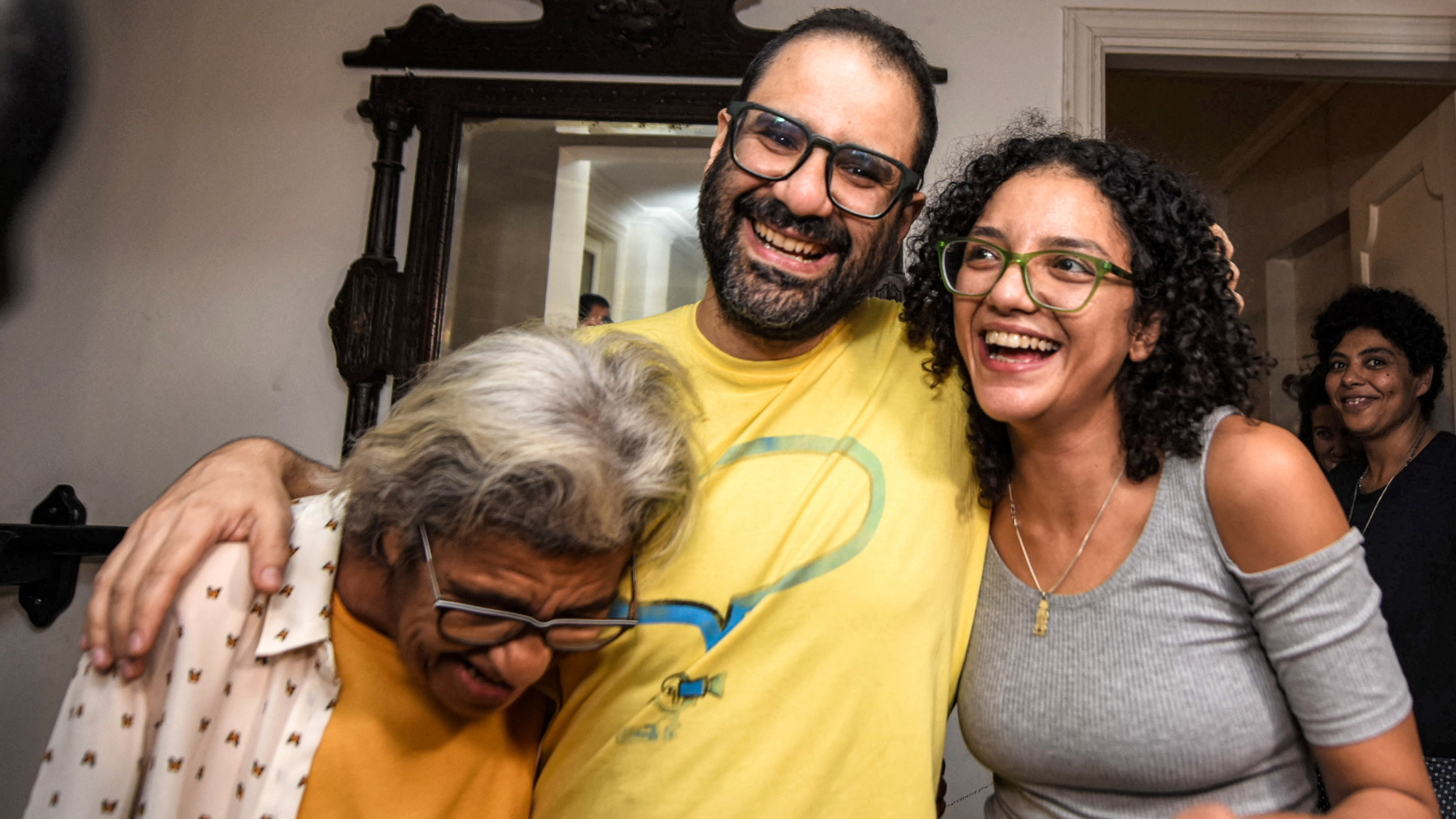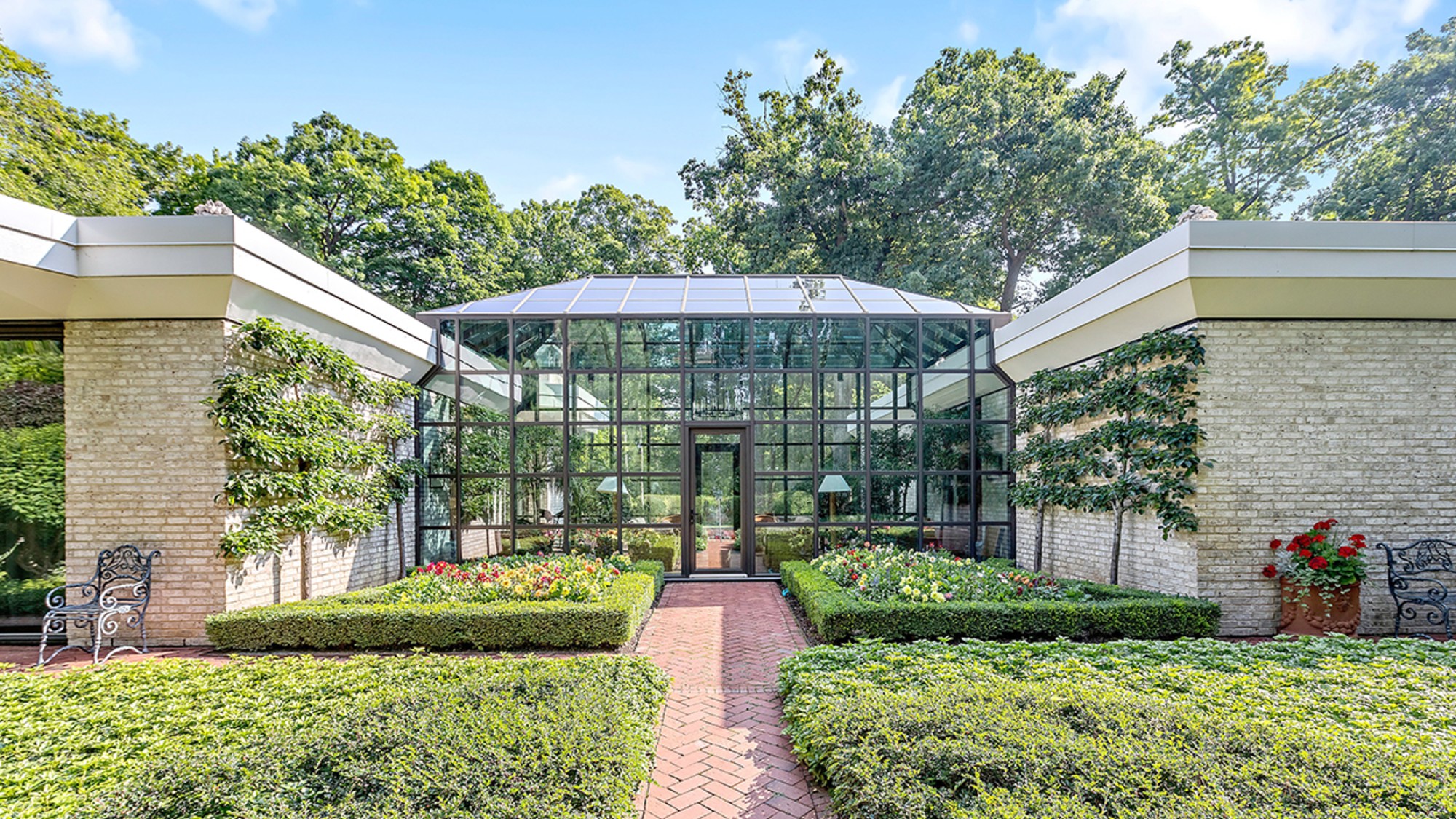Phyllida Barlow obituary: renowned sculptor who was also an influential art teacher
The teacher and artist found her passion later in life, focusing most of her pieces on the instability of modern architecture

Phyllida Barlow was 16 years old, and in her first term at art school, when one of her teachers noted that her painting had a sculptural quality, and suggested that she work in clay instead. It was, she said, “an awakening”.
Yet it would be 50 years before she had her first major exhibition, at the Serpentine Gallery in London. Such was its success, her work was then shown at galleries all over the world, including Tate Britain; and in 2017, when she was 73, she was selected to represent Britain at the Venice Biennale.
The media lapped up this story of late-life success, said The Times, though Barlow herself wasn’t entirely happy about “the focus on the little old lady living in Finsbury Park who has had five children”, and whose materials are salvaged from “rummaging around in her skip”. She had, she said, never sourced materials from skips.
The Week
Escape your echo chamber. Get the facts behind the news, plus analysis from multiple perspectives.

Sign up for The Week's Free Newsletters
From our morning news briefing to a weekly Good News Newsletter, get the best of The Week delivered directly to your inbox.
From our morning news briefing to a weekly Good News Newsletter, get the best of The Week delivered directly to your inbox.

However, her installations were formed from detritus: old planks, pallets, doors, plastic sheets and blocks of polystyrene, arranged in vast, teetering piles. Fascinated by abandoned industrial objects, she described her work as jokey but menacing reflections on the “false solidity” of conventional architecture.
As she pointed out, the early 21st century had been defined by monuments coming down – from the Twin Towers to the statue of Saddam Hussein in Baghdad. Of course, as an artist she was not really a “late starter”.
She had worked for years in relative obscurity because she had not believed that her “strange fumblings in the studio” would resonate with an audience. Sometimes, she’d left her pieces on roadsides, to be picked up by passers-by or just to rot; others she had recycled into new works.
But during that time, she had been busy teaching – rising to become professor of art, and the director of undergraduate studies, at the Slade, and Rachel Whiteread, Tacita Dean and Martin Creed were among her pupils.
A free daily email with the biggest news stories of the day – and the best features from TheWeek.com
Phyllida Barlow was born in Newcastle, in 1944, to Brigit Black, a writer, and Erasmus Barlow, a psychiatrist. Her forebears included Charles Darwin.

After the War, the family moved to Richmond, southwest London. The sight of the ruined city, and its reconstruction, had a profound effect on Barlow, said The New York Times, and later became “intrinsic” to her art. In 1960, she enrolled at the Chelsea School of Art.
After leaving there, she went to the Slade, where she recalled one of her male tutors telling her that he’d not be bothering with her much, because “by the time you’re 30, you’ll be having babies and making jam”.
At Chelsea, aged 18, she’d met Fabian, the son of the writer and artist Mervyn Peake, who became her husband. They moved into a shabby house overlooking a railway yard in Finsbury Park, with a small studio.
Barlow taught at several art colleges, between breaks in which she cared for her five children, before returning to the Slade in 1986. She didn’t show her work formally, but in the 1980s and 1990s, she staged guerrilla installations in playgrounds and in a defunct factory, said The Guardian.
Sometimes, she’d hurl pieces into the Thames at night. Many of her pupils loved her; some of them became very famous, and it was thanks to them that Iwan Wirth, of Hauser & Wirth, heard her name.
He visited her chaotic home, and decided that she was “vintage Hauser & Wirth”. After that, things moved quickly.
She became a fellow of the Royal Academy in 2011; she was awarded the CBE in 2015, and was made a Dame in 2021. Owing to her newfound success, she was able to move her studio into a 12,000sq ft warehouse, where she could create ever larger pieces.
“I love big sculpture,” she said, “that sense of my own physicality being in competition with something that has no rational need to be in the world at all. And I think that is in itself just an expression of the human condition, of who we are and what we are.”
-
 Shots fired in the US-EU war over digital censorship
Shots fired in the US-EU war over digital censorshipIN THE SPOTLIGHT The Trump administration risks opening a dangerous new front in the battle of real-world consequences for online action
-
 What will the US economy look like in 2026?
What will the US economy look like in 2026?Today’s Big Question Wall Street is bullish, but uncertain
-
 Alaa Abd el-Fattah: should Egyptian dissident be stripped of UK citizenship?
Alaa Abd el-Fattah: should Egyptian dissident be stripped of UK citizenship?Today's Big Question Resurfaced social media posts appear to show the democracy activist calling for the killing of Zionists and police
-
 The best food books of 2025
The best food books of 2025The Week Recommends From mouthwatering recipes to insightful essays, these colourful books will both inspire and entertain
-
 Art that made the news in 2025
Art that made the news in 2025The Explainer From a short-lived Banksy mural to an Egyptian statue dating back three millennia
-
 Nine best TV shows of the year
Nine best TV shows of the yearThe Week Recommends From Adolescence to Amandaland
-
 Winter holidays in the snow and sun
Winter holidays in the snow and sunThe Week Recommends Escape the dark, cold days with the perfect getaway
-
 The best homes of the year
The best homes of the yearFeature Featuring a former helicopter engine repair workshop in Washington, D.C. and high-rise living in San Francisco
-
 Critics’ choice: The year’s top 10 movies
Critics’ choice: The year’s top 10 moviesFeature ‘One Battle After Another’ and ‘It Was Just an Accident’ stand out
-
 A luxury walking tour in Western Australia
A luxury walking tour in Western AustraliaThe Week Recommends Walk through an ‘ancient forest’ and listen to the ‘gentle hushing’ of the upper canopy
-
 Joanna Trollope: novelist who had a No. 1 bestseller with The Rector’s Wife
Joanna Trollope: novelist who had a No. 1 bestseller with The Rector’s WifeIn the Spotlight Trollope found fame with intelligent novels about the dramas and dilemmas of modern women